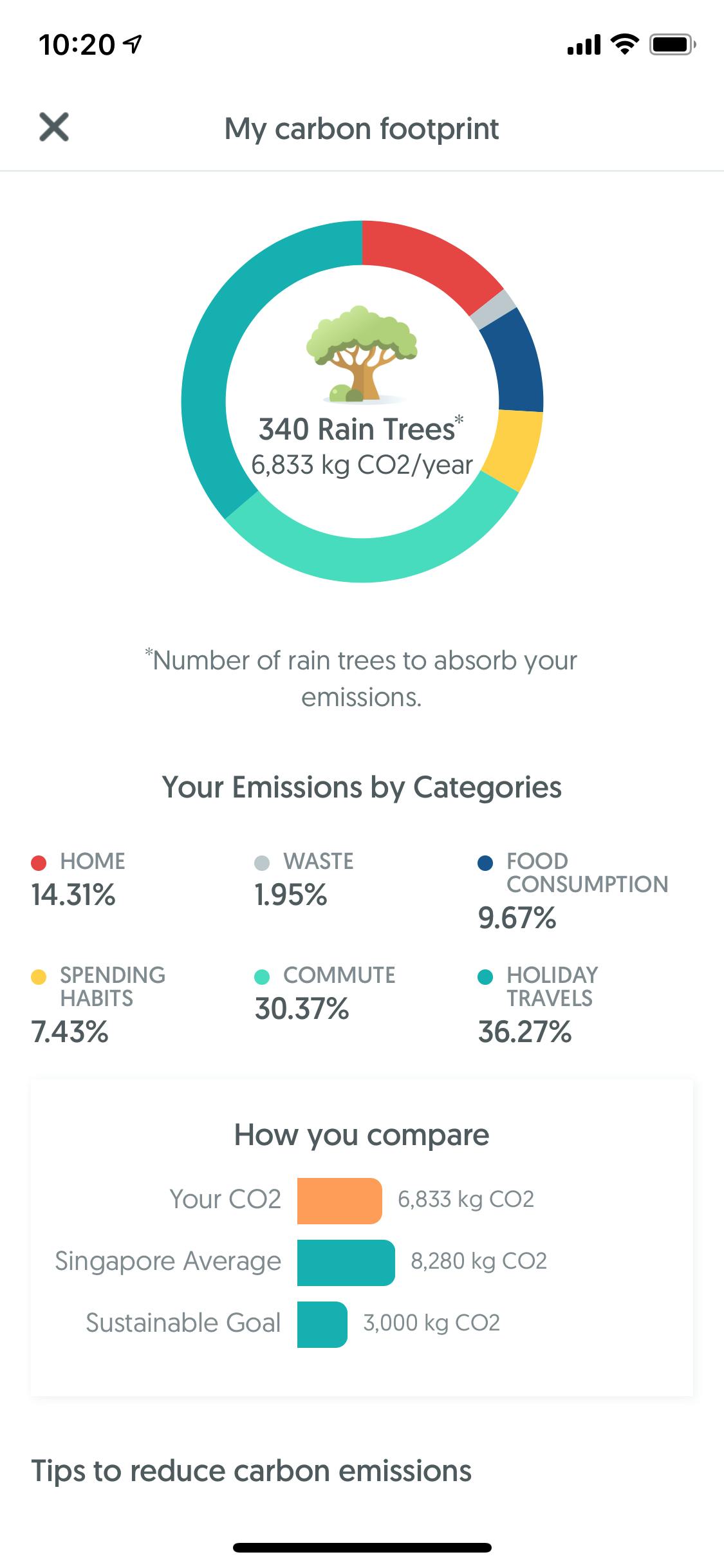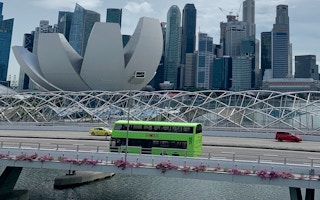The fight against climate change is a race against time. Countries and businesses aim to transform their economies to meet carbon reduction goals, but what if the world cannot innovate its way out of the climate crisis?
Corporates are, after all, driven by demand — they are drilling for oil and gas, mining precious metals, felling trees, and emitting carbon because people love to fly, drive cars, eat meat and dairy, shop, and work in air-conditioned offices.
The question is, will individuals take it upon themselves to embrace lifestyle changes for the sake of the planet?
A study by Accenture and the World Wide Fund for Nature (WWF) Singapore, published in March, revealed that a large portion of Singaporeans are eager to take action for the environment by making more sustainable purchases.
The study, which involved 500 participants, showed that a third of Singaporean consumers identify as “eco-warriors” — consumers who make most, if not all, of their purchasing and lifestyle decisions based on sustainability, and are even willing to pay up to 10 per cent more for sustainable alternatives.
To help conscious consumers lower their environmental footprints, mobile apps can be useful guides.
Launched last May, in the hottest time of the year when electricity bills rise as people crank up the air-conditioning, a new carbon footprint calculator called My Carbon Footprint helped residents better understand the environmental impact of their daily habits, and how to adopt greener lifestyle choices.
Introduced by SP Group, My Carbon Footprint tracks emissions from electricity, gas and water, and guides people towards lower consumption. It is available on the SP Utilities App, which also advises on the best clean energy plan to choose, and reward users for adopting green habits. The app also promotes green mobility, by helping Singapore’s electric vehicle drivers find and use SP Group’s electric vehicle charging network.
Here’s how consumers can lead lower-carbon lifestyles:
Carbon footprint calculator

The average Singapore resident consumes more than 8 tonnes of carbon emissions annually, and more than 400 trees are required to absorb this impact.
The average annual electricity consumption of a four-room household is equivalent to about 18.3 tonnes of carbon emissions — requiring approximately 90 rain trees per household to offset.
My Carbon Footprint is a calculator that provides consumers with their emissions profile, so that they can pinpoint the aspects of their lifestyle which are most carbon-heavy.
The tool is tailored for Singapore residents, as it is programmed on localised emission factors. These range from the daily commute, to food, waste management, shopping habits and energy use.
For example, transport emissions are localised to Singapore’s Mass Rapid Transit (MRT) system, which can be very different from those of other countries with rail systems or subways.
Track and green your electricity
During this time of year (April to August), the average Singaporean household consumes 6 per cent more electricity. This is attributed to the hotter months, when the air-conditioning is cranked up.
In the wake of the Covid-19 pandemic, an increase of work-from-home arrangements also points to higher electricity consumption, according to SP Group’s national utility data.
Households that have advanced electricity meters installed will be able to monitor their half-hourly meter readings on the app to identify spikes in their electricity consumption and take steps to manage their usage more efficiently.
There is even the option to match any desired proportion of monthly electricity consumption with clean energy. Users of the SP Utilities app can use the My Green Credit function to purchase “green credits” and match their electricity consumption with an equivalent amount of green energy produced. This makes it easy for everyone to support green energy in a convenient, affordable and secure way.
From small to big steps
Once a user generates their emissions profile, the GreenUP function on the SP Utilities app points them to steps they can take to adopt environmentally-friendly habits.
WWF’s study shows that many Singaporean consumers struggle at this stage, with 75 per cent wanting to behave more sustainably, but worry they lack the options to do so.
Starting small may seem inconsequential, but is proven to have a rippling effect on behaviour change. Furniture retailer IKEA has noticed from experience running sustainability programmes that if consumers start with small steps like reducing household food waste, they move on to take bigger measures in other areas like energy conservation.
Furthermore, two-thirds of Singaporeans are motivated by incentives such as rewards points or tax relief to buy sustainable products, according to WWF’s research.
SP’s GreenUP programme allows individuals to earn points for living more consciously, and generate sustainable savings through conscious shopping discounts. Here’s how it works:
- Bring your own (BYO) bottle, bag, lunchbox, and cutlery when you shop or takeaway food;
- Support local produce, and cut down emissions needed for food imports;
- Get a barePack subscription for food deliveries to eliminate single-use plastic waste;
- Donate your unwanted packaged food to charities like FoodBank.
Travel green
Globally, transport emissions have increased nearly 60 per cent since 1990, more than any other sector.
With the best public transportation network of any city of its density, opting for greener travel is one of the most viable ways to cut the carbon in Singapore. Footprint reduction tips featured on the app include:
- Walk or cycle when commuting short distances;
- Take public transport (buses or MRT) when commuting longer distances;
- Think twice about purchasing a car, and co-own or use ride-sharing apps.
In compact Singapore, citizens drive an average of only 45 kilometres a day, but EVs have a range of between 250 and 300 kilometres on a single charge.
Over the last five years, SP has installed public EV charging stations island-wide, with a quarter of them only requiring a 30-minute charging time. The SP Utilities App allows EV owners to locate the closest charging station, and informs them of its availability and charging speed.
This feature will be useful to navigate Singapore’s newly EV-enabled environment. In February, the government unveiled a slew of measures to make Singapore more EV-friendly as part of a new green plan, including making EVs cheaper to buy and rolling out a plan to deploy 60,000 charging points by 2030.
Start taking climate action by measuring your carbon footprint with My Carbon Footprint on the web or the SP Utilities app.


















